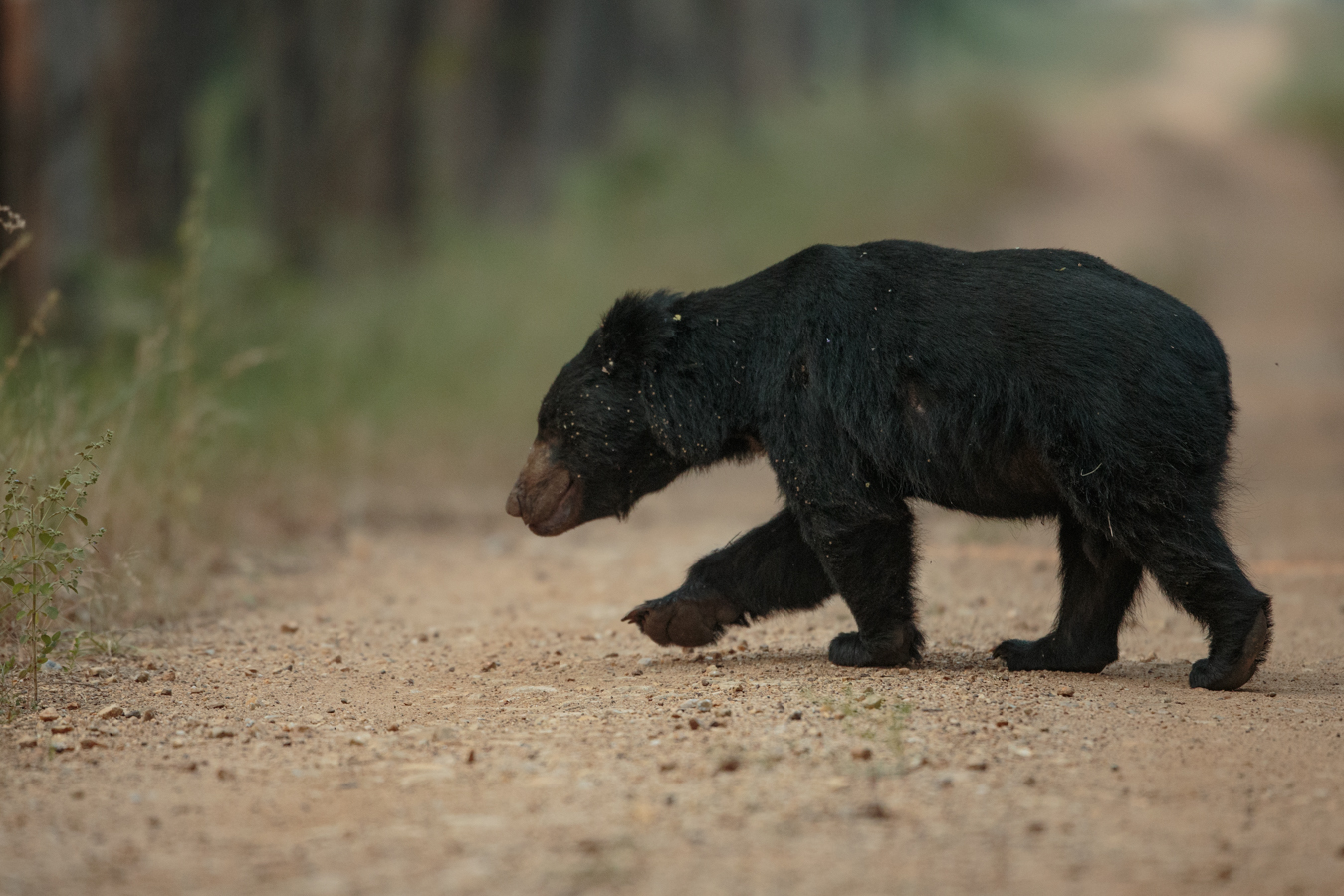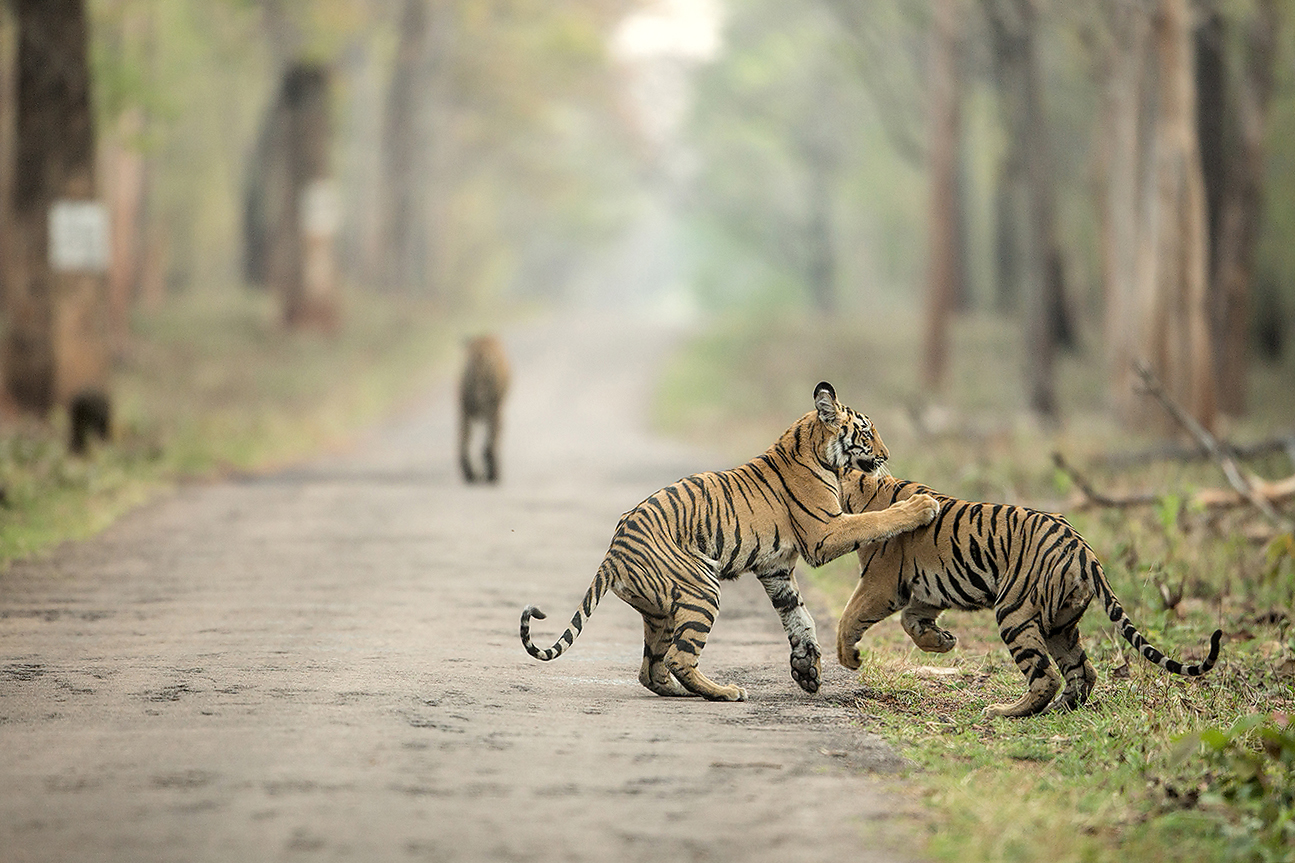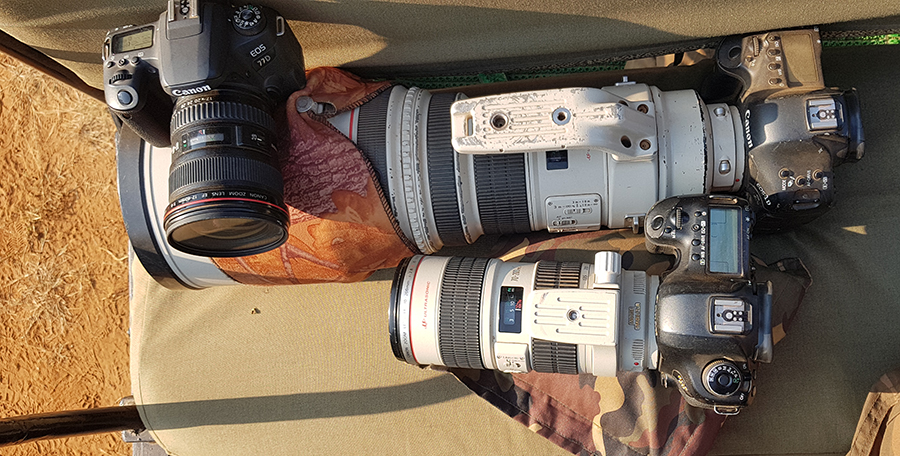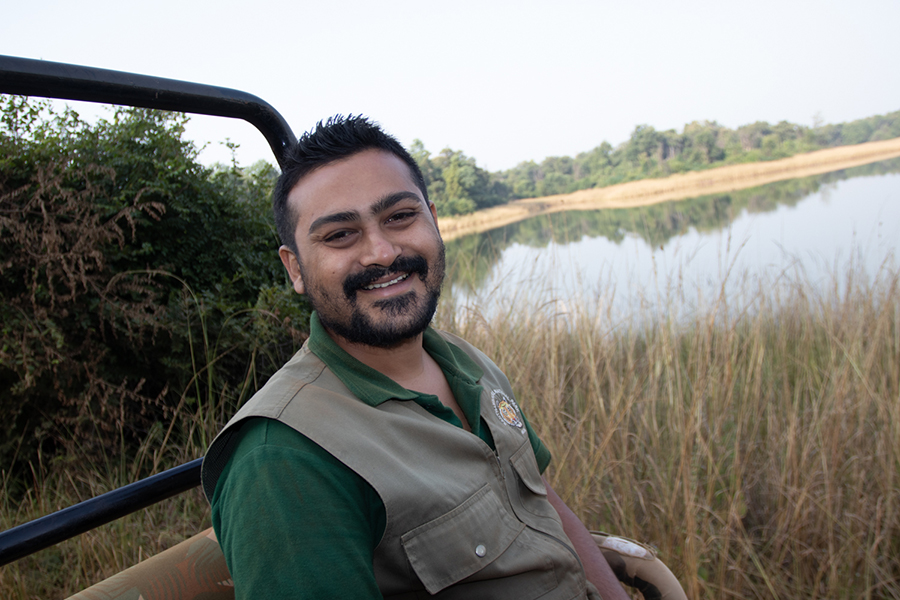Wild Tigers in India
Introduction
It is very difficult to find the words to describe the experience of seeing your first wild tiger. By their very nature, tigers are shy, elusive and most individuals exhibit crepuscular activity. However, there are a few that have accepted our presence through time, and it is these tigers that offer a us a unique insight into a hidden world.
The Jungle
I have been to Bandhavrgarh, Panna, Kanha and several other reserves, but the one at the top of the list is Tadoba Andhari Tiger Reserve. At sunrise, the forest is beautiful. Rays of light breaking through the canopy, the sound of birds singing, water gushing down rivers and streams. This is an experience in itself.
However, knowing that a desperately endangered, beautiful and iconic animal resides within these thickets of bamboo and grass gives rise to a unique excitement.
Tracking
Tigers are creatures of habit, so they can be tracked. Early morning and late evening they often patrol the borders of their territories. Seeking out their footprints or pug-marks on soft ground, we can predict the general direction the tiger has moved in. Couple this with a knowledge of the jungle topography, the individual, the location of waterholes and prey gatherings etc. we can reasonably predict where we may have an encounter. We also need a little luck! Often we will reach a likely location, stop the engine, and simply listen. A tiger’s movement does not go unnoticed by the other animals and you can further track them by listening for langur, deer and peacock alarm calls.
Tracks can also give clues to other species movement
A langur monkey about to sound an alarm call.
Some cats are very shy and often wait for the jeep to pass by and then reveal themselves…
It pays to watch other animals behaviour. Are they tense, are they staring at something intently? Have they stopped normal foraging behaviours?
A shadowy presence melts into the bamboo thickets 400mm f2.8, 1DX.
Encounters
Once on the trail, encounters can last anything from a few seconds to hours depending on the situation. Tracking wildlife in India is not like in the plains of Africa, and animals are more challenging to spot. That said, when you encounter your first wild tiger, I would urge you to look at her with your own eyes and not through the lens of a camera. This experience will stay with you for the rest of your life. I promise you.
Canon 1dx, 400mm f2.8, 1/1000th sec
Ethical Viewing
We should aim to use drivers and guides that operate ethically and place the welfare of the subject before anything else. I personally avoid situations where a tigress may be surrounded by multiple jeeps and prefer to visit less busy parts of the forest.
Other Species
A whole host of species bring life and colour to the jungle. Below is a small selection of what tiger reserves can offer.
A beautiful golden orb spider. These can be found on huge webs throughout the forest, especially post monsoon. The male is the one on the right! Canon 5d mk iii, 70-200mm f2.8
A beautiful indian roller, taken at 800mm f5.6, 1dx.
A stunning changable hawk eagle resting by a large lake. 1DX, 800mm f5.6.
Flying foxes, 800mm f5.6 1DX
A huge brown fish owl with the remains of a meal, 800mm f5.6, 1DX
The indian wild dog, or dhole. Canon 77d, 800mm f5.6.
A sloth bear, 400mm f2.8, 1DX
A beautiful cat, the leopard. 400mm f2.8, 1DX
Time of Year
For reserves in Central India, April is a very popular time to see tigers for various reasons. Most of the smaller water bodies have dried up by April, and tigers are forced to drink at the few remaining sites. This allows us to sit and wait if a tiger is in the area as they will inevitably come to drink. Post monsoon months October and November are beautiful as some parks are still lush and green, providing a beautiful backdrop. This does pose some challenges as they can be harder to spot, but again with a little luck, research and good guides you will see them. The winter months provide the coolest weather if one is intolerant to heat and the light can be beautiful at sunrise and sunset. Going into March, the heat starts to pick up with temperatures well into the 30’s, eventually leading into the mid 40’s in April. May and June are just too hot, especially for the uninitiated!
Post monsoon greens in November, 5D mk iii, 400mm f5.6
April at Tadoba, 400mm f2.8, 5d mk iii.
Managing the Conditions
Wear lose comfortable neutral clothing, purchase face snoods, hats and shades to combat dust in the spring and summer months and be sure to take plenty of water with you. You will look pretty comical, but it’s worth it! Temperatures in April can reach 45 degrees Celsius!
If you get the opportunity, I would definitely stop for a break for a cup of tea and to meditate on the days sightings…
It’s all for comfort!
The Lodges
Lodges vary in reserves. The lesser known reserves such as Umred or Bor, have very little if any where to stay. Upcoming reserves like Tadoba now have some very nice accommodation, whereas more established reserves like Bandhavgarh have a few more options. Lodges are often very close to the entrance gates, and you will find guests such as langur monkeys and owls visiting you even before the safari has started.
A little visitor outside my door, Canon 1DX, 400mm f2.8
The Jeeps
Safari’s are conducted in small 4 x 4 vehicles called gypsies. These give a clear 360 degree view of the forest around you and often have armrests where beanbags and lenses can be rested. There is also a ledge that separates the driver from the passengers which can be a good place to rest cameras for stability. Tripods and mono-pods are a no-no, due to space and the speed of some encounters.
Camera Gear
I currently take the following:
CAMERA BODIES
Canon 1DX, EOS RP, 77D, 40D, go pro.
The 1DX is my main tiger camera. The full frame sensor, noise performance, auto-focus, colours and fps allow me to express my creative vision most of the time. Having 12fps allows me to select the right moment to show the world.
The EOS RP is my back -up and secondary camera. It is often paired with the 70-200mm f2.8 to capture animals within the context of their habitat.
The 77d is used for the extra reach the 1.6x APSC sensor gives as well as for filming with the duel pixel auto focus. The flip screen also adds another tool to aid my creativity.
MY LENSES
The Canon 400mm f2.8 IS is heavy, expensive, built like a tank, but if used correctly, can produce dream like-images that used to only appear in my minds eye. The low light performance, subject isolation (see below) and quality gives images a unique look but at a cost.
The Canon 70-200mm f2.8 IS is my go to lens to show the forest habitat, including lakes, jungles, and the animals within.
The Canon 17-40mm f4 is used to capture dramatic skies, and the odd vlogging video. Can you spot the tigress below?
The 15mm fisheye is used for vlogging from the vehicle and some quirky images.
It can get very dusty, especially in April so I rarely leave my gear exposed like below. I’ll either cover it with a bag or have most of it under cover.
What you should take:
CAMERAS
SLR – Any modern SLR with either a crop sensor or full frame sensor will be adequate. I personally use a combination as the full frame gives me great isolation and low light performance, whilst a crop sensor gives me extra reach if needed. Leading brands include Canon and Nikon.
Mirror-less – Any modern-day, micro four-thirds, or full frame mirror less system would be ideal. The advantages here are the relatively small size and weight which is great for a safari situation. Leading brands include Sony, Olympus and Fuji film.
Bridge - A relatively affordable option would include an all in one zoom bridge camera. Advantages include low cost, a huge zoom range and light weight. Image quality is unlikely to match that of SLR’s and mirror less-cameras.
I would consider taking at least two bodies. Partly for back-up, and partly because you would not want to lose precious seconds changing lenses during an encounter.
LENSES
Ultra wide/wide – these are useful for vlogging, and capturing the huge lakes present in the tiger reserve. For crop sensors an 18-55mm would suffice, for full frame 16-35mm lenses would be great.
Medium Tele zoom- A 70-200mm for a full frame camera, or a 55-200mm or similar would be ideal to capture animals within the context of their habitat.
Tele prime/zoom - A 400mm prime lens or equivalent focal length would be the minimum required. Entry level f5.6 versions would be fine in April where there is plenty of light, but in autumn and winter I would aim for something with a wider aperture.
All in one Zoom -There are many options here if one is not comfortable with changing lenses. Ranges vary from 18-200mm to 18-300mm for crop sensor camera bodies.
Camera Support
I mostly use a beanbag to support and stabilise my heavy lenses. It’s very important to have constant communication with the driver and guide as you will need to get into the right positions, but also switch off the engine to stop all vehicle vibration when shooting. I sometimes use a monopod for filming with my 400mm f2.8.
Camera bag
A suitable bag that fits in the overhead compartment and segregates lenses and camera bodies is a must, and multiple options are available.
Cleaning gear and tools
I always take a dust blower, and sensor cleaning solution. The roads in spring and summer can be quite dusty so I always check the state of my equipment at the end of each drive. There are some useful lens wipes made from Zeiss that I keep on me at all times. I normally have a small screwdriver as sometimes the screws on my 400mm f2.8 become loose, especially on the bumpy roads! I would keep the gear covered during game drives also!
Back-up
I normally take a small laptop and a couple of hard disks and back-up images to three separate locations.
Guides
It is always best to work with local guides and naturalists.. People who have spent quality time in the jungles and know the area inside out. I currently travel to Tadoba with my good friend Arpit Parekh who has spent over a decade with tigers and the wildlife of Tadoba. There are over 40 species of mammals and over 250 bird species that have been recorded in Tadoba, and Arpit can identify 90% of these at distance which I find astonishing!
Conservation and Supporting Local Communities
At the entry points of most tiger reserves are stalls and stands where you can buy things like caps, hats, face snoods (to protect against the dusty terrain) and general gifts. I always make a point to spend money here as its going back to the locals, which will in turn have incentive to protect the forest and parks. There are many non- government organisations that support the parks, but I choose to support WildCats Conservation Alliance, as all proceeds go to work in the field. Please be sure to click on their link and see how you can help protect tigers in the wild.
Conclusion
In a way, the experience of seeing a wild tiger can make us better. By going to India to see tigers we are actually aiding their long term survival, and providing much needed money and resource into local communities. Just by going to see them, in a way we are giving back, and that is why I return year after year after year…they need us to.
Canon 1DX, 400mm f2.8
Canon 1dx, 400mm f2.8
Canon 77d, 800mm f5.6
Send me a message here if you would like to know more about photographing tigers in India!


































